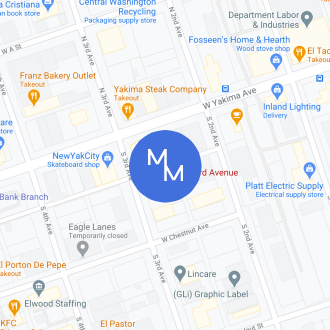Unless you have been through the process of litigating a personal injury accident case before, you probably don’t know how one is handled. Victims are often confused in the beginning because they assume that a lawsuit will be filed right away.
Typically, an actual lawsuit is filed only after your attorney has exhausted all efforts to settle the case out of court or when the statute of limitations is about to run out and filing a lawsuit is required to preserve your rights.
If you have been the victim of a Washington personal injury accident, you may be wondering why a case would not settle and how to determine when a trial will be necessary. Each victim is unique, as is each case; however, there are some general procedures that are followed in most personal injury cases, as well as common reasons why a case does not settle.
A Question of Negligence
As soon as you retain a Washington personal injury lawyer, your attorney will begin to investigate the case to determine who the negligent party was, or who was at fault in the case. Sometimes negligence is clear; at other times it is not. In cases where more than two parties were involved, such as a multi-car pile-up, determining negligence can be complicated. Understandably, each party that is involved will try and place the blame on another party.
In order for a settlement to be reached out of court, someone has to accept the blame and agree to compensate you for your injuries. Whether it is only one party or many, if fault cannot be agreed upon, the case may have to proceed to trial.
A Question of Compensation
Even if the other party or parties involved in the case accept liability and agree that they were negligent, you still may not be able to reach an out of court settlement if they do not agree to the amount of compensation you are asking for in your settlement demand.
As the term implies, settlement negotiations require some give and take on both sides. You and your attorney will sit down and decide what a fair settlement is, given the injuries that you suffered in the accident. You may not get the defendant to agree to your figure in your first demand; however, you should not settle for less than what you deserve, either. If the negligent party is unwilling to agree to a reasonable settlement amount, then the only option left is to take the case to trial.
The Risks of Trial
Taking any case to trial is risky. If the judge or jury decides that the defendant was not negligent, then you walk away with nothing. Even if the judge or jury finds the defendant negligent, they could award you far less than what you feel the case is worth. On the other hand, they could also award you far more than what you would have settled for out of court.
Washington is a “pure comparative negligence” state. A judge or jury determines the level of responsibility the victim had in the accident expressed as a percentage. The final compensation the victim receives is based on that percentage. If the judge or jury decides you were partially at fault in the accident, the amount you receive will be reduced accordingly.
The risks of trial should be discussed at length with your attorney prior to making the decision to proceed to trial.
If you have been involved in a Yakima personal injury accident and you feel that the other party involved in the accident was negligent, then you may be entitled to compensation for the injuries you sustained in the accident. Contact the Yakima personal injury accident team at Mariano Morales Law today for your free initial consultation by calling (509) 853-2222.


